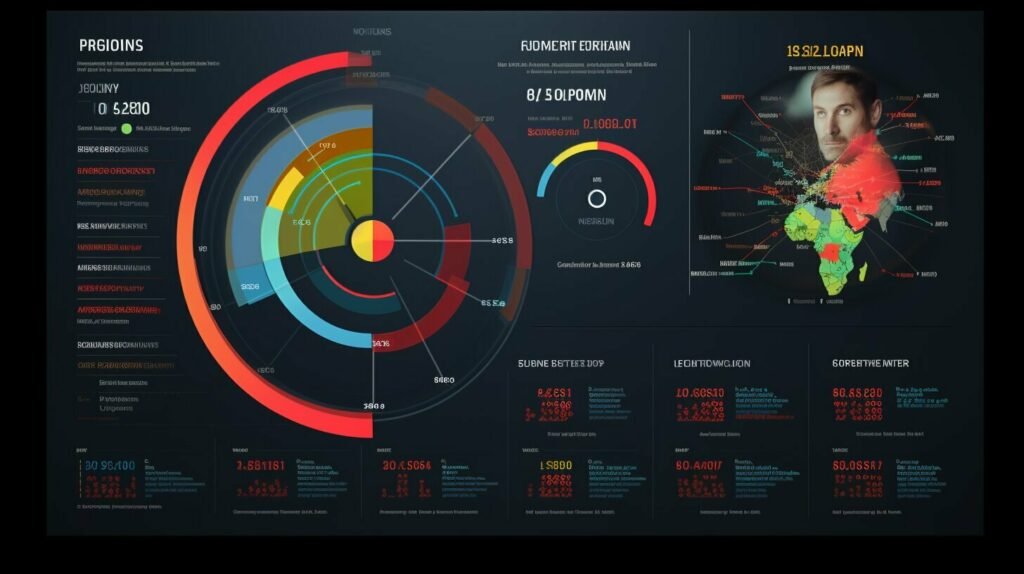Welcome to our comprehensive guide on creating website content! Whether you’re a seasoned professional or just starting out, this article will provide you with the essential tips and tutorials needed to craft engaging and effective content for your website. From understanding your target audience to optimizing your content for search engines, we’ve got you covered.
Creating website content is not just about putting words on a page. It requires careful planning, strategy, and writing skills that resonate with your target audience. In this article, we will explore the importance of content creation for websites, including the role it plays in content marketing and development strategies. We will also cover essential steps such as content planning, writing compelling copy, and optimizing your content for search engines. Additionally, we’ll discuss best practices for managing and updating your website content and measuring its effectiveness.
By the end of this article, you will have all the tools needed to create website content that engages your audience and drives your business forward. Let’s dive in!
The Importance of Content Creation for Websites
Content creation has become a crucial aspect of website development and for good reason. In today’s digital landscape, businesses and individuals alike are recognizing the value of content marketing and how it can help them achieve their goals.
Put simply, content marketing is the process of creating and sharing valuable, relevant, and consistent content to attract and retain a clearly defined audience and ultimately drive profitable customer action. By providing informative and engaging content, you can build brand awareness, establish your authority in your industry, and drive traffic to your website.
But content creation isn’t just important for content marketing. It can also play a vital role in your overall content development strategy. By consistently creating high-quality content, you can improve your search engine rankings, drive more traffic to your site, and ultimately convert more visitors into customers.
In short, content creation is a powerful tool that can help you achieve your marketing and business objectives. By investing time and resources into developing a strong content strategy, you can reap the benefits of increased visibility, engagement, and ultimately, conversions.

Understanding Your Target Audience
When it comes to creating website content, understanding your target audience is essential. Content that resonates with your audience is more likely to be shared, commented on, and engaged with. This can help boost your website’s traffic and improve your search engine ranking. Therefore, it is crucial to conduct content analysis and find out what interests your target audience.
| Why is Content Analysis Important? | The Benefits of Content Analysis |
|---|---|
| Identifies audience preferences and interests | Helps create targeted content |
| Improves engagement and interaction | Increases website traffic and ranking |
| Reveals gaps and areas for improvement | Provides data-driven insights for content planning |
By conducting content analysis, you can learn what types of content your audience prefers and what topics they are most interested in. You can use this information to create targeted content that caters to their needs and interests.
Moreover, content analysis can help you understand how your audience interacts with your content. You can track metrics such as engagement, shares, and comments to determine which pieces of content are resonating with your audience and which ones are not. This information can help you improve your content strategy.
Overall, understanding your target audience is crucial for creating website content that resonates with them. Conducting content analysis is an effective way to gather insights and data that can inform your content planning and strategy.

Content Planning and Strategy
Before creating website content, it’s essential to have a solid plan and strategy in place. A well-crafted content plan can help you identify your goals and target audience, as well as develop a roadmap for creating and publishing content that resonates with your readers.
To create a content plan, start by identifying your target audience. Consider factors such as age, gender, interests, pain points, and needs. This information will help you create content that speaks directly to your readers, driving engagement and conversions.
Next, brainstorm content ideas that align with your audience’s interests and needs. Use tools such as keyword research and content analysis to identify topics that are currently in demand and relevant to your target audience. Develop a content calendar to ensure that you’re publishing content consistently and at the right times.
A solid content strategy should also include guidelines for the tone and style of your content, as well as the channels through which your content will be distributed. Will you be using social media, email marketing, or other channels to promote your content? Determine the best channels for reaching your target audience and focus on creating content that fits their preferences.
| Content Planning Checklist: |
|---|
| Identify your target audience |
| Brainstorm content ideas |
| Develop a content calendar |
| Define the tone and style of your content |
| Determine channels for content distribution |
By developing a solid plan and strategy for your website content, you can ensure that your content is consistently high-quality and relevant to your readers. Remember to stay flexible and adapt your plan as needed to meet the evolving needs of your target audience and industry trends.

Writing Compelling Website Copy
Writing compelling website copy is essential for engaging and retaining your audience. Here are some tips and techniques to help you craft effective content:
- Know your audience: Before you start writing, it’s important to understand who your target audience is. What are their interests, pain points and goals? This will help you tailor your content to their needs.
- Use headlines and subheadings: Breaking up your content into sections with clear headlines and subheadings makes it easier for readers to navigate and find the information they need. It also makes your content more visually appealing.
- Create a strong opening: Your opening sentence should grab your reader’s attention and encourage them to keep reading. It should be interesting, relevant and succinct.
- Write in a conversational tone: Writing in a conversational tone makes your content more relatable and engaging. Avoid using jargon or complicated language that your audience may not understand.
- Use examples: Providing examples helps to illustrate your points and makes your content more tangible for your audience. Use real-life situations and experiences to make your content more relatable.
- End with a call to action: Conclude your content with a clear call to action that tells your audience what to do next. Whether it’s signing up for a newsletter or making a purchase, make it easy for your audience to take the next step.
By following these tips and techniques, you can create compelling website copy that resonates with your audience and drives engagement. Remember to always put your audience first, and focus on creating content that is relevant, informative and valuable.

Optimizing Your Website Content
Optimizing your website content for search engines is essential to attract traffic and increase online visibility. Here are some effective techniques for keyword research and on-page optimization:
| Keyword Research | On-Page Optimization |
|---|---|
|
|
Remember to optimize for user experience as well as search engines. Your website content should be informative, engaging, and relevant to your target audience.

By following these techniques, you can improve your website’s search engine rankings and attract more traffic to your site.
Managing and Updating Your Website Content
Creating high-quality content for your website is only the first step. To keep your site fresh and engaging, you need to regularly manage and update your content. Here are some tips to help you:
Establish a Content Management Plan
Creating a content management plan is crucial to ensuring that your website content stays up-to-date and relevant. Your plan should define who is responsible for creating, publishing, and updating content, as well as establish a schedule for when updates should occur. By having a clear and organized plan, you can ensure that your website content remains fresh and engaging to your audience.
Monitor Analytics
Tracking your website’s analytics can help you identify which pieces of content are performing well and which ones are not resonating with your audience. By regularly monitoring your analytics, you can then make data-driven decisions about which content to update or remove. This will ensure that the content on your site is always delivering value to your audience.

Keep Content Relevant
As your website and audience grow and evolve, it’s important to make sure that your content remains relevant. Regularly updating your pages, creating new content, and removing outdated information will help keep your website fresh and interesting to your audience.
Engage with Your Audience
Your audience can provide valuable feedback about your website content and what they would like to see more of. Make sure to engage with your audience through social media, email, or online forums to get a sense of their needs and preferences. This feedback can help you create content that resonates with your audience and keeps them coming back to your website.
Measuring Content Effectiveness and Making Improvements
Creating website content is not a one-time task but an ongoing process. Measuring the effectiveness of your content can help you identify what’s working and what isn’t. Here are some tips on how to measure the success of your website content and how to make data-driven improvements.
Google Analytics
Google Analytics is a powerful tool that allows you to track the performance of your website and content. You can use it to measure pageviews, time spent on the page, bounce rate, and more. By analyzing this data, you can identify which pages and pieces of content are performing well and which ones need improvement.
For example, if you notice that a particular blog post has a high bounce rate, it may be an indication that the content is not resonating with your audience. You might consider updating the content or rethinking your content strategy for that particular topic.
Conversion Rates
Measuring conversion rates is another way to evaluate the effectiveness of your website content. Conversion rates refer to the percentage of website visitors who take a desired action, such as filling out a contact form or making a purchase.
You can use Google Analytics or other website analytics tools to track conversion rates. By analysing the data, you can gain insights into which content is driving the most conversions and make data-driven decisions to improve your website content.
Content Analysis
Content analysis involves taking a deep dive into your website content and evaluating its effectiveness. You can use a tool like SEOWritingAI to analyze your content and identify areas for improvement.
For example, SEOWritingAI can help you identify the readability of your content, suggest ways to improve your headlines and subheadings, and even provide feedback on the tone and style of your writing.
Make Improvements
Once you have identified areas for improvement in your website content, make the necessary changes. Update your content with new information, add more visuals, and optimize for SEO. By making continuous improvements to your website content, you can keep your audience engaged and drive more conversions.

Frequently Asked Questions about Creating Website Content
Creating website content can be a daunting task, and it’s natural to have questions about the process. Here are some of the most frequently asked questions about creating website content:
What is the most important element to focus on when creating website content?
The most important element of website content is to know your target audience and create content tailored to their interests and needs. Keeping your audience in mind will help you craft content that resonates with them and keeps them engaged.
How often should I update my website content?
It’s important to keep your website content fresh and up-to-date to maintain your audience’s interest. It’s recommended to update your website content at least once a month, but more frequently is better if possible. This can include refreshing existing content or adding new content regularly.
What are some common mistakes to avoid when creating website content?
Some common mistakes to avoid when creating website content include not understanding your target audience, using jargon or technical language that your audience may not understand, and not providing value or answer a question for your audience. It is also essential to ensure that your website content is easy to read and visually appealing.
How do I measure the effectiveness of my website content?
There are several ways to measure the effectiveness of your website content, including website traffic, bounce rates, conversion rates, and social shares. Analytics tools like Google Analytics can help you track these metrics to evaluate the effectiveness of your website content.
What should I do if my website content is not performing as expected?
If your website content is not performing as expected, it’s important to assess your content strategy and make changes where necessary. Consider performing content analysis to identify areas where your content may be falling short and adjust your content strategy accordingly.
How can I make my website content more engaging?
To make your website content more engaging, focus on creating content that is informative, valuable, and visually appealing. Use images and videos to break up long blocks of text, and encourage audience engagement through comments and social shares.
By following these tips and answering these frequently asked questions, you can create compelling website content that resonates with your target audience and helps you achieve your business goals.

